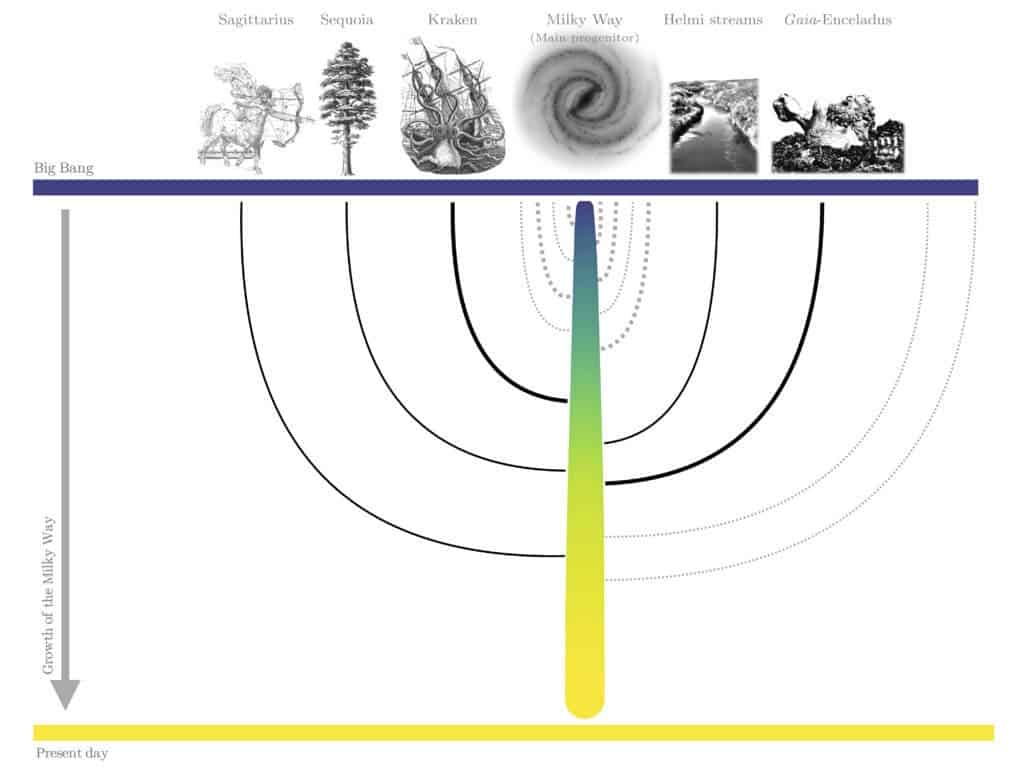The Milky Way has had a long and eventful life. Throughout its history, our galaxy has collided and merged with multiple other galaxies, events that are hard to disentangle and make sense of. With the aid of Artificial Intelligence, a team of astronomers took on this painstaking task, piecing together the most complex history of our galaxy — and the main attraction is something called The Kraken.

AI meets the stars
Just like geologists look for fossils to see how ancient life might have looked like, astronomers also look for fossils of their own — but instead of trilobites or dinosaurs, astronomers are preoccupied with very old cosmic structures called globular clusters.
Globular clusters are spherical-shaped, densely-packed collections of ancient stars. They can be almost as old as the universe itself, shuffled by processes and incorporated into galaxies. They serve as fossils in the sense that they can be used as stable information to reverse engineer galactic processes that happened billios of years in the past.
Using only globular structures, an international team of researchers led by Dr Diederik Kruijssen at the Center for Astronomy at the University of Heidelberg (ZAH) and Dr .Joel Pfeffer at Liverpool John Moores University has managed to decipher the Milky Way’s merger history and reconstruct its family tree.
“The main challenge of connecting the properties of globular clusters to the merger history of their host galaxy has always been that galaxy assembly is an extremely messy process, during which the orbits of the globular clusters are completely reshuffled,” said astronomer Diederik Kruijssen of the University of Heidelberg, Germany.
They used what data was available about the age, chemistry, and motion of these globular structures to produce simulations to see what could have led to the structures we see today, especially in terms of mergers and collisions with globular structures and galaxies.
Their simulations, called E-MOSAICS, are unique. They include a complete model for the formation, evolution, and destruction of globular clusters over the past 10 billion years. A neural network was used to help with the simulations.
“To make sense of the complex system that is left today, we therefore decided to use artificial intelligence. We trained an artificial neural network on the E-MOSAICS simulations to relate the globular cluster properties to the host galaxy merger history. We tested the algorithm tens of thousands of times on the simulations and were amazed at how accurately it was able to reconstruct the merger histories of the simulated galaxies, using only their globular cluster populations.”
“We tested the algorithm tens of thousands of times on the simulations and were amazed at how accurately it was able to reconstruct the merger histories of the simulated galaxies, using only their globular cluster populations,” Kruijssen adds.
The Kraken
The globular clusters were grouped based on their orbital motion, because clusters with similar orbits are thought to have come from the same place: either the ancestral structure of the Milky Way or another galaxy that was subsumed by the Milky Way at some point in the past. This is exactly where AI shines the most, finding patterns in large sets of known data.
Four of these subsumed galaxies were already known:
- the Gaia-Enceladus galaxy also known as the Gaia Sausage, gobbled up by the Milky Way around 9 billion years ago;
- the Helmi streams, consumed around 10 billion years ago;
- the Sequoia galaxy, merging with the Milky Way around 9 billion years ago;
- and the Sagittarius dwarf galaxy, which has repeatedly punched through the Milky Way for billions of years.
But the AI also showed a fifth one that wasn’t known. It was pieced together from a recently discovered group of “low energy” globular clusters. According to the software’s analysis, these clusters all match the properties of a previously unknown collision with what the team has dubbed the Kraken galaxy.
Whatever the Kraken was, it made a big impact on our galaxy — both figuratively and literally.
“The collision with Kraken must have been the most significant merger the Milky Way ever experienced,” Kruijssen said.
“Before, it was thought that a collision with the Gaia-Enceladus-Sausage galaxy, which took place some 9 billion years ago, was the biggest collision event. However, the merger with Kraken took place 11 billion years ago, when the Milky Way was four times less massive. As a result, the collision with Kraken must have truly transformed what the Milky Way looked like at the time.”
With this information, astronomers have now produced the family tree of the Milky Way. This could form a new basis of our understanding not only the history of our galaxy, but also processes that may happen in the future. As more telescope data comes in and can be fed into the simulations, the family tree will be refined increasingly further.
The research has been published in the Monthly Notices of the Royal Astronomical Society.


